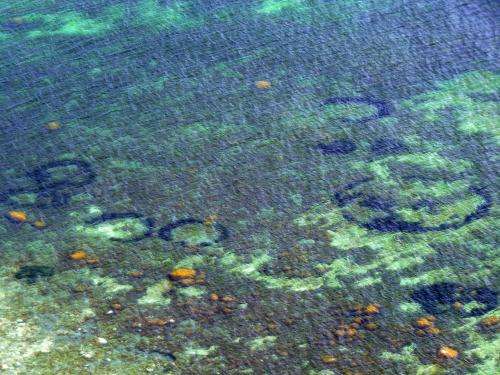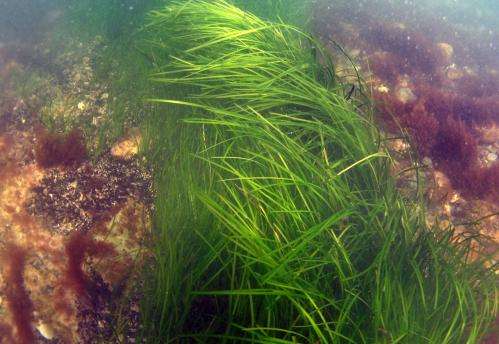At last: Mysterious ocean circles in the Baltic Ocean explained

Are they bomb craters from World War II? Are they landing marks for aliens? Since the first images of the mysterious ocean circles off the Baltic coast of Denmark were taken in 2008, people have tried to find an explanation. Now researchers from the University of Southern Denmark and University of Copenhagen finally present a scientific explanation.
The first pictures appeared in 2008, taken by a tourist and showing some strange circular formations in the shallow waters off the famous white cliffs of chalk on the island Møn in Denmark. In 2011, the circles came back, and this time there were so many that they made it to the media.
Investigating biologists then concluded that the circles consisted of eelgrass plants growing on the bottom of the shallow water. But only now scientists can explain why the eelgrass grows in circles here – eelgrass usually grows as continuous meadows on the seabed.
"It has nothing to do with either bomb craters or landing marks for aliens. Nor with fairies, who in the old days got the blame for similar phenomena on land, the fairy rings in lawns being a well known example", say biologists Marianne Holmer from University of Southern Denmark and Jens Borum from University of Copenhagen.
The circles of eelgrass can be up to 15 meters in diameter and their rim consists of lush green eelgrass plants. Inside the circle there can be seen only very weak or no eelgrass plants.

"We have studied the mud that accumulates among the eelgrass plants and we can see that the mud contains a substance that is toxic to eelgrass", explain Holmer and Borum.
The poison is sulfide, a substance that accumulates in the seabed off the island of Møn, because it is very calcareous and iron-deficient.
"Most mud gets washed away from the barren, chalky seabed, but like trees trap soil on an exposed hillside, eelgrass plants trap the mud. And therefore there will be a high concentrations of sulfide-rich mud among the eelgrass plants," explain the researchers.
Sulfide is toxic enough to weaken the old and new eelgrass plants but not toxic enough to harm adult and strong plants. And since eelgrass spreads radially from the inside out the oldest and weakest plants are located in the center of the growth circle.
Jens Borum and Marianne Holmer say: "Eelgrass populations grow vegetatively by stolons which spread radially in all directions and therefore each plant creates a circular growth pattern. When the sulfide begins to work, it starts with the oldest and thus the inner part of the population because here is an increased release of toxic sulfide and uptake by plants due to accumulation of mud. The result is an exceptional circular shape, where only the rim of the circle survives – like fairy rings in a lawn".
The waters off Møn's chalk cliffs are not the only place where sulfide destroys eelgrass. Sulfide poisoning of eelgrass is a major problem worldwide. Sulfide is often created where oxygen disappears from the seabed. This can happen when the seabed is fed nutrients from agriculture.
Underwater meadows of eelgrass and other seagrasses grow in many parts of the world where they serve as home to a variety of small animals, filter the water and trap carbon and nutrients. But the meadows are threatened in almost all regions of the world, and in several places, including Denmark, researchers and authorities work to prevent seagrasses from disappearing.
More information: Eelgrass fairy rings: sulfide as inhibiting agent . Borum , Holmer , et al. Mar. Biol. Published online 12 October 2013.
Provided by University of Southern Denmark
















